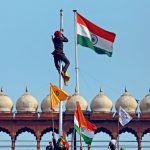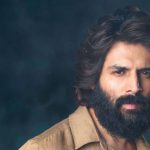Not as Old as You Think
…nor very Hindu either. There is telling evidence to debunk this nationalistic myth
 Meera Nanda
Meera Nanda
 Meera Nanda
|
10 Feb, 2011
Meera Nanda
|
10 Feb, 2011
/wp-content/uploads/2015/11/yoga-1.jpg)
…nor very Hindu either. There is telling evidence to debunk this nationalistic myth
No one denies that Hinduism’s most sacred and ancient texts, including the Bhagvad Gita, describe different kinds of yogic practices. But what does this ancient and sacred tradition of yoga have to do with what people all around the world do in yoga classes in gyms and fitness centres today?
To most Indians, such questions are nothing less than sacrilegious. Yoga is for them what apple pie and motherhood are for Americans: a living symbol of their way of life.
Indians tend to affirm their claims on yoga by trotting out the familiar icons of the ‘5,000-year-old Vedic tradition,’ which supposedly stretches from the Pashupati seal of the (actually very unVedic) Indus Valley civilisation to the Bhagvad Gita and the venerable Yoga Sutras of Patanjali. Yoga, Indians like to solemnly declare, is ‘eternal’ and ‘timeless’ and all the great yoga masters, from Swami Vivekananda to BKS Iyengar to Baba Ramdev of our own time, have only restored or reinstituted an ancient practice. It is also commonplace to hear Indians—even those who are not particularly spiritual themselves—blame Americans and other ‘decadent’ Westerners for reducing their spiritually rich tradition to mere calisthenics.
Lately, Hindus in America have started flying the saffron flag over American-style yoga, which consists largely of yogic asanas and stretches. The leading Indo-American lobby, Hindu American Foundation (HAF), has recently started a vocal campaign to remind Americans that yoga was made in India by Hindus. Not just any ordinary Hindus, but Sanskrit-speaking, forest-dwelling Brahmin sages who learned to discipline their bodies in order to purify their atman. The purist Hindu position, articulated by the HAF, is that all yoga, including its physical or hatha yoga component, is rooted in the Hindu religion/way of life that goes all the way back to the Vedic sages and yogis.
There is only one problem with this purist history of yoga: it is false. Yogic asanas were never ‘Vedic’ to begin with. Far from being considered the crown jewel of Hinduism, yogic asanas were in fact looked down upon by Hindu intellectuals and reformers—including the great Swami Vivekananda—as fit only for sorcerers, fakirs and jogis. Moreover, what HAF calls the “rape of yoga”, referring to the separation of asanas from their spiritual underpinning, did not start in the supposedly decadent West; it began, in fact, in the akharas and gymnasiums of 19th and 20th century India run by Indian nationalists seeking to counter Western images of effete Indians. It is in this nationalistic phase that hatha yoga took on many elements of Western gymnastics and body-building, which show up in the world-renowned Iyengar and Ashtanga Vinyasa schools of yoga. Far from honestly acknowledging the Western contributions to modern yoga, we Indians simply brand all yoga as ‘Vedic,’ a smug claim that has no intellectual integrity.
It is the hidden history of modern postural yoga that is the main theme of this essay. But first, some background on the great ‘take back yoga’ movement.
YOGA IN AMERICA
Yoga is to North America what McDonald’s is to India: both are foreign implants gone native. Not unlike the golden arches that are mushrooming in Indian cities, the urban and suburban landscape of the United States is dotted with neighbourhood health clubs, spas and even churches and synagogues offering yoga classes.
Some 16 million Americans do some form of yoga, primarily as a part of their exercise and fitness routine. When everyday Americans talk about yoga, they mostly mean hatha yoga, involving stretches, breathing and bodily postures.
Many styles of postural yoga, pioneered by India-origin teachers—the Iyengar and Sivananda schools, the Ashtanga Vinyasa or ‘power yoga’ of Pattabhi Jois, and ‘hot yoga,’ recently copyrighted by Bikram Chaudhary—thrive in the United States. The more meditational forms of yoga, popularised by the disciples of Vivekananda, Sivananda and other swamis, are less popular. Americans’ preference for postural yoga over meditational yoga is not all that unique: in India, too, hundreds of millions follow Baba Ramdev, India’s most popular tele-yogi, who teaches a medicalised, asana-oriented yoga with little spiritual or meditational content.
By and large, the US yoga industry does not hide the origins of what it teaches. On the contrary, in a country that is so young and so constantly in flux, yoga’s presumed antiquity (‘the 5,000-year-old exercise system’, etcetera.) and its connections with Eastern spirituality have become part of the sales pitch. Thus, doing namastes, intoning ‘om’ and chanting Sanskrit mantras have become a part of the experience of doing yoga in America. Many yoga studios use Indian classical or kirtan music, incense, signs of ‘om’ and other paraphernalia of the Subcontinent to create a suitably spiritual ambience. Iyengar yoga schools begin their sessions with a hymn to Patanjali, the second-century composer of the Yoga Sutras, and some have even installed his icon. This Hinduisation is not entirely decorative either, as yoga instructors are required to study Hindu philosophy and scriptures to get a licence to teach yoga.
‘TAKE BACK YOGA’
One would think that yoga’s popularity and Hinduisation would gladden the hearts of Hindu immigrants.
Wrong.
The leading Hindu advocacy organisation in the United States, the aforementioned Hindu American Foundation or HAF, is hardly beaming with pride. On the contrary, it has recently accused the American yoga industry of ‘stealing’—even ‘raping’—yoga by stripping it of its spiritual heritage and not acknowledging its Hindu roots. Millions of Americans will be shocked to learn that they are committing ‘intellectual property theft’ every single time they strike a yogic pose because they fail to acknowledge yoga’s ‘mother tradition,’ namely Hinduism. HAF’s co-founder and chief spokesperson, Aseem Shukla, exhorts his fellow Hindus to ‘take back yoga and reclaim the intellectual property of their spiritual heritage.’
The take-back-yoga campaigners are not impressed with the growing visibility of Hindu symbols and rituals in yoga and other cultural institutions in the US. They still find Hindu-phobia lurking everywhere they look. They want Americans to think of yoga, the Yoga Sutras of Patanjali and the great Vedas when they think of Hinduism, instead of the old stereotypes of caste, cows and curry. They would rather, to paraphrase Shukla, that Hinduism is linked less with holy cows than Gomukhasana (a particularly arduous asana); less with colourful wandering sadhus and more with the spiritual inspiration of Patanjali. It seems this yoga-reclamation campaign is less about yoga, and more about the Indian diaspora’s strange mix of defensiveness and an exaggerated sense of the excellence of the elite, Sanskritic aspects of Hindu religion and culture.
The ‘who owns yoga’ debate gained worldwide attention last November, when The New York Times carried a front-page feature on the issue. But the dispute started earlier, with a battle of blogs, hosted online by The Washington Post, between HAF’s Shukla and New Age guru Deepak Chopra. Shukla complained of the yoga establishment shunning the ‘H-word’ while making its fortunes off Hindu ideas and practices. He accused the yoga and New Age industry, including Indian gurus like Deepak Chopra, Maharishi Mahesh Yogi and others, of using euphemisms like ‘Eastern wisdom’ and ‘ancient Indian’ to repackage Hindu ideas without calling them by their proper name. Chopra, who does indeed shun the Hindu label and calls himself an ‘Advaita Vedantist’ instead, declared that Hinduism had no patent on yoga. He argued that yoga existed in ‘consciousness and consciousness alone’ much before Hinduism, just like wine and bread existed before Jesus’ Last Supper, implying that Hindus had as much claim over yoga as Christians had over bread and wine. Shukla called Chopra a “philosophical profiteer” who does not honour his Hindu heritage, while Chopra accused Shukla and HAF of a Hindu-fundamentalist bias.
NEITHER ETERNAL NOR VEDIC
This debate is really about two equally fundamentalist views of Hindu history. The underlying objective is to draw an unbroken line connecting 21st century yogic postures with the nearly 2,000-year-old Yoga Sutras, and tie both to the supposedly 5,000-year-old Vedas. The only difference is that, for Chopra, yoga existed before Hinduism, while Shukla and HAF want to claim the entire five millennia for the glory of Hinduism. For Chopra, yoga is a part of ‘timeless Eastern wisdom’. For the HAF, ‘Yoga and the Vedas are synonymous, and are as eternal as they are contemporaneous.’
The reality is that postural yoga, as we know it in the 21st century, is neither eternal nor synonymous with the Vedas or Yoga Sutras. On the contrary, modern yoga was born in the late 19th/early 20th centuries. It is a child of the Hindu Renaissance and Indian nationalism, in which Western ideas about science, evolution, eugenics, health and physical fitness played as crucial a role as the ‘mother tradition’. In the massive, multi-level hybridisation that took place during this period, the spiritual aspects of yoga and tantra were rationalised, largely along the theosophical ideas of ‘spiritual science,’ introduced to India by the US-origin, India-based Theosophical Society, and internalised by Swami Vivekananda, who led the yoga renaissance.
In turn, the physical aspects of yoga were hybridised with drills, gymnastics and body-building techniques borrowed from Sweden, Denmark, England, the United States and other Western countries. These innovations were creatively grafted on the Yoga Sutras—which has been correctly described by Agehananda Bharati, the Austria-born Hindu monk-mystic, as ‘the yoga canon for people who have accepted Brahmin theology’—to create an impression of 5,000 years worth of continuity where none really exists. The HAF’s current insistence is thus part of a false advertising campaign about yoga’s ancient Brahminical lineage.
WHAT VEDIC ROOTS?
Contrary to the widespread impression, the vast majority of asanas taught by modern yoga gurus are not described anywhere in ancient sacred Hindu texts. Anyone who goes looking for references to popular yoga techniques like pranayam, neti, kapalbhati or suryanamaskar in classical Vedic literature will be sorely disappointed.
The four Vedas have no mention of yoga. The Upanishads and The Bhagvad Gita do, but primarily as a spiritual technique to purify the atman. The Bible of yoga, Patanjali’s Yoga Sutras, devotes barely three short sutras (out of 195) to physical postures, and that too only to suggest comfortable ways of sitting still for prolonged meditation. Asanas were only the means to the real goal—to still the mind to achieve the state of pure consciousness—in Patanjali’s yoga.
There are, of course, asana-centred hatha yoga texts in the Indic tradition. But they definitely do not date back 5,000 years: none of them makes an appearance till the 10th to 12th centuries. Hatha yoga was a creation of the kanphata (split-eared) Nath Siddha, who were no Sanskrit-speaking sages meditating in the Himalayas. They were (and still are) precisely those matted-hair, ash-smeared sadhus that the HAF wants to banish from the Western imagination. Indeed, if any Hindu tradition can at all claim a patent on postural yoga, it is these caste-defying, ganja-smoking, sexually permissive, Shiva- and Shakti-worshipping sorcerers, alchemists and tantriks, who were cowherds, potters and suchlike. They undertook great physical austerities not because they sought to achieve pure consciousness, unencumbered by the body and other gross matter, but because they wanted magical powers (siddhis) to become immortal and to control the rest of the natural world.
Far from being purely Vedic, hatha yoga was born a hybrid. As Amartya Sen reminded us in his recent address to the Indian Science Congress, universities like Nalanda were a melting pot where Buddhist Tantra made contact with Taoism from China. By the time Buddhism reached China through Nalanda and other centres of cultural exchange along the Silk Route in the north and the sea route in the south, Taoists were already experimenting with qigong, which involved controlled breathing and channelling of ‘vital energy’. Taoist practices bear an uncanny similarity with the yogic pranayam, leading scholars to believe that the two systems have borrowed from each other: Indians learning exercise-oriented breathing from Taoists, and Taoists in China learning breathing-oriented meditation from their Indian neighbours.
But this Taoist-Buddhist-Shaivite synthesis was only the beginning. As we see below, hatha yoga was to absorb many more influences in the modern era, this time from the West.
FABRICATING ANCIENT TEXTS
The problem for historians of modern yoga is that even these medieval hatha yoga texts describe only a small fraction of modern yogic postures taught today. BKS Iyengar’s Light on Yoga alone teaches 200 asanas, while the 14th century Hatha Yoga Pradipika lists only 15 asanas, as do the 17th century Gheranda Samhita and Shiva Samhita.
Given that there is so little ancient tradition upon which to stand, unverifiable claims of ancient-but-now-lost texts have been promoted. The Ashtanga Vinyasa system of Pattabhi Jois, for example, is allegedly based on a palm-leaf manuscript called the Yoga Kurunta that Jois’s teacher, renowned yoga master T Krishnamacharya (1888–1989), unearthed in a Calcutta library. But this manuscript has reportedly been eaten by ants, and not a single copy of it can be found today. Another ‘ancient’ text, the Yoga Rahasya, which no one has been able to trace, was supposedly dictated to Krishnamacharya in a trance by the ghost of an ancestor who had been dead nearly a millennium. Such are the flimsy—or rather fictional—grounds on which rest Hinduism’s claimed intellectual property rights to yoga.
This sorry attempt to create an ancient lineage for modern yoga is reminiscent of the case of Vedic mathematics. In that case, Swami Shri Bharati Krishna Tirtha, the Shankaracharya of Puri, insisted that 16 sutras in his 1965 book, titled Vedic Mathematics, are to be found in the appendix of Atharva Veda. When no one could find the said sutras, the Swami declared they appear only in his own appendix to the the Atharva Veda and not any other! This ‘logic’ has not prevented Vedic maths from emerging as a growth industry, attracting private spending by well-heeled Indians seeking to boost brainpower and public spending by state governments that have introduced it in school curriculums.
SECRETS OF THE MYSORE PALACE
New research has brought to light historical documents and oral histories that raise serious doubts about the ‘ancient’ lineage of Pattabhi Jois’ Ashtanga Vinyasa and Iyengar yoga. Both Jois (1915–2009) and Iyengar (born 1918) learnt yoga from T Krishnamacharya from 1933 till the late 1940s, when he directed a yoga school in one wing of the Jaganmohan Palace of the Maharaja of Mysore, Krishnaraja Wodiyar IV (1884–1940).
The Maharaja, who ruled the state and the city of Mysore from 1902 till his death, was well known as a great promoter of Indian culture and religion. But he was also a great cultural innovator, who welcomed positive innovations from the West, incorporating them into his social programmes. Promoting physical education was one of his passions, and under his reign, Mysore became the hub of a physical culture revival in the country. He had hired Krishnamacharya primarily to teach yoga to the young princes of the royal family, but he also funded the travels all over India of Krishnamacharya and his protégés to give yoga demonstrations, thereby encouraging an enormous popular revival of yoga.
Indeed, Mysore’s royal family had a long-standing interest in hatha yoga: Mummadi Krishnaraja Wodeyar III (1799–1868), Wodeyar IV’s ancestor, is credited with composing an exquisitely illustrated manual, titled Sritattvanidhi, which was first discovered by Norman Sjoman, a Swedish yoga student, in the mid-1980s in the library of the Mysore Palace. What is remarkable about this book is its innovative combination of hatha yoga asanas with rope exercises used by Indian wrestlers and the danda push-ups developed at the vyayamasalas, the indigenous Indian gymnasiums.
Both Sjoman and Mark Singleton, a US-based scholar who has interviewed many of those associated with the Mysore Palace during its heyday in the 1930s, believe that the seeds of modern yoga lie in the innovative style of Sritattvanidhi. Krishnamacharya, who was familiar with this text and cited it in his own books, carried on the innovation by adding a variety of Western gymnastics and drills to the routines he learnt from Sritattvanidhi, which had already cross-bred hatha yoga with traditional Indian wrestling and acrobatic routines.
In addition, it is well established that Krishnamacharya had full access to a Western-style gymnastics hall in the Mysore Palace, with all the usual wall ropes and other props that he began to include in his yoga routines.
Sjoman has excerpted the gymnastics manual that was available to Krishnamacharya. He claims that many of the gymnastic techniques from that manual—for example, the cross-legged jumpback and walking the hands down a wall into a back arch—found their way into Krishnamacharya’s teachings, which he passed on to Iyengar and Jois. In addition, in the early years of the 20th century, an apparatus-free Swedish drill and gymnastic routine, developed by a Dane by the name of Niels Bukh (1880–1950), was introduced to India by the British and popularised by the YMCA. Singleton argues that “at least 28 of the exercises in the first edition of Bukh’s manual are strikingly similar (often identical) to yoga postures occurring in Pattabhi Jois’ Ashtanga sequence or in Iyengar’s Light on Yoga.” The link again is Krishnamacharya, who Singleton calls a “major player in the modern merging of gymnastic-style asana practice and the Patanjali tradition.”
SO, WHO OWNS YOGA?
The HAF’s shrill claims about Westerners stealing yoga completely gloss over the tremendous amount of cross-breeding and hybridisation that has given birth to yoga as we know it. Indeed, contemporary yoga is a unique example of a truly global innovation, in which Eastern and Western practices merged to produce something that is valued and cherished around the world.
Hinduism, whether ancient, medieval or modern, has no special claims on 21st century postural yoga. To assert otherwise is churlish and simply untrue.
Meera Nanda is a visiting professor of history of science at the Indian Institute of Science Education and Research, Mohali
About The Author
CURRENT ISSUE
Rashmika Mandanna: India’s Sweetheart
MOst Popular
4

/wp-content/uploads/2025/04/Cover-Rashmika-New.jpg)











More Columns
Saving Farmers from the Unions Siddharth Singh
The New Hotspot Kaveree Bamzai
Chills and Spills in Small Town America Kaveree Bamzai